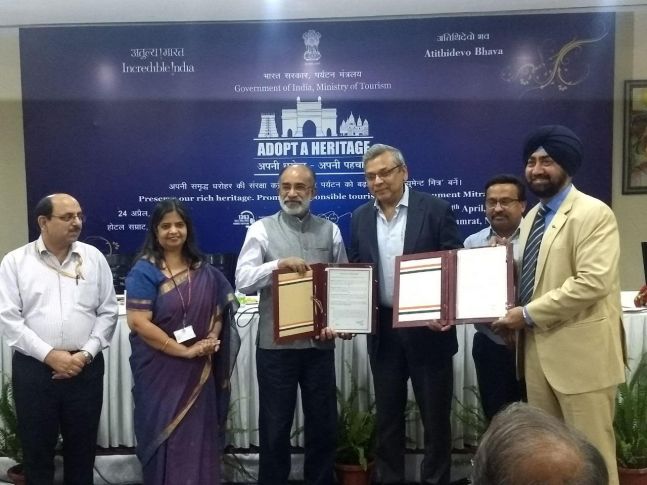
Tourism minister announcing the MoU with Dalmia Bharat Group for the upkeep of Delhi’s Red Fort. Courtesy: India Today.
Corporate greed/profit used productively for the upkeep of national monuments is a good idea.
That being said, which monuments to hand over is an important, albeit difficult line. However, a little bit of thought will tell you that those monuments that the ASI has the least allocation for should ideally come first to be “corporatised”. As an analogy, consider your home. Imagine you don’t make enough to maintain the entire house. Now, you have to take on a PG. Would you first put up your own master bedroom for lease on Airbnb or would it be the spare guest room? The ASI has enough funding and expertise for the upkeep of the Red Forts (I’d be very surprised if they didn’t) and the Taj Mahals and the Ellora Caves.
But they may not have enough for, say, Sinhgad Fort or Vishrambaug Wada (I don’t know whether that’s true, but seeing their state in Pune, I can only assume this to be an intelligent guess). Shouldn’t there be a list of monuments that go (so to say) under the hammer first?
Of course, it can come with suitable and reasonable caveats like hiring only ASI-approved experts for restorations (which must be compulsory) and regular audits etc. and a unilateral right for the ASI to take charge if they see any hanky panky? Shouldn’t it come with a method for measuring success, like a public feedback system to let ASI know if the monument is being maintained correctly? Ideally, shouldn’t a proportion of entry fees be offered to the bidder rather than advertising rights?
I mean, there are better ways to skin the cat, even in capitalism. Surely, our taxes and their meagre allocation to the ASI isn’t enough, but must they put the family silver out as the first line of defence?
There’s always a paradox, like in the airline business. The government wants to sell off a loss-making asset, but the capitalists only want to buy the profit-making parts of it. It’s a balancing act. But we pay our politicians and bureaucrats enough and hire enough smart people in the administrative services to find and walk that line. They need to put some more thought into this. But like everything Modi, it seems more a knee-jerk impromptu decision than a calculated, well-studied one.
Lastly, if one were doing this right, the money from the corporates for this program would come from the CSR budgets and not their marketing ones. Each has a different endpoint and expectation. The powers-that-be must be mindful of this distinction.
We cannot have a government run by a party whose declared ideology includes safeguarding and expanding India’s cultural heritage while hiving off prime cultural assets to capitalists. Or is “cognitive dissonance” an alien idea to this administration and its cohorts & followers?
Modiji, how many times have you taken an idea that’s acceptable, even desirable, on principle, and made a hash of it in implementation? As any entrepreneur worth his/her salt knows: Ideas are worthless without implementation, which is the secret sauce.


















